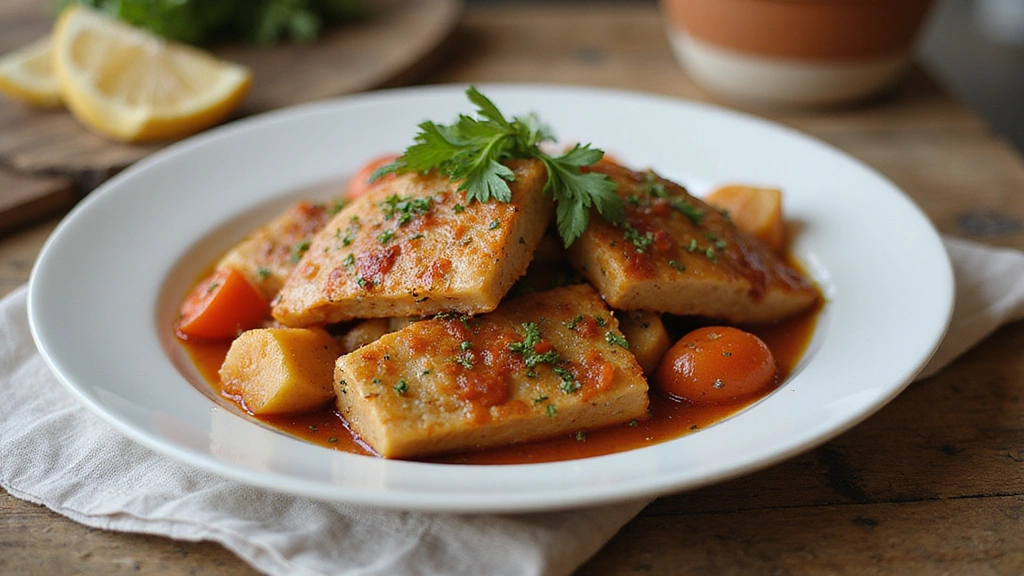
Quick and Easy Dinner Recipes
Ingredients
Equipment
Method
- Step-by-Step
- Prep: Thinly slice chicken, toss with cornstarch and seasoning; chop veggies; blanch broccoli and snap peas in boiling water for 2 minutes, then shock in ice water to retain color.
- Make Sauce: Mix soy sauce, oyster sauce, and sesame oil.
- Stir-Fry: Heat wok/large pan over high heat, sear chicken 3–4 minutes until golden, remove. Sauté bell pepper 1–2 minutes, add blanched veggies 2–3 minutes. Return chicken, pour in sauce, toss 1 minute.
Notes
- Pro Tips:
- Use fresh veggies and high-quality soy sauce; marinate chicken with egg white for extra tenderness.
- Preheat pan thoroughly to avoid sticking; blanch veggies briefly for crunch.
- Prep ahead: Chop ingredients and refrigerate.
- Garnish: Sprinkle sesame seeds and scallions.
- Essential Tools: Wok or large skillet, sharp knife, wooden spoon (substitute: non-stick pan if no wok).
- Troubleshooting:
- Soggy veggies: Blanch shorter and stir-fry on high heat.
- Too salty sauce: Dilute with water.
- Tough chicken: Use cornstarch marinade and avoid overcooking.
This classic Chicken Stir-Fry brings together centuries of culinary tradition with modern techniques to create a dish that’s both comforting and elegant.
The harmonious balance of savory soy sauce, fresh ginger, and vibrant vegetables creates a memorable dining experience that will have everyone asking for your secret.
I discovered this recipe during my travels through Southeast Asia, where local chefs have perfected it through generations of careful refinement.
Whether you’re preparing a casual family dinner or hosting a special celebration, this Chicken Stir-Fry delivers impressive results with straightforward preparation.
The History and Cultural Significance
• Chicken Stir-Fry traces its origins to China, where it was originally created as a quick and nutritious meal for farmers and workers.
• The dish evolved over decades as ingredients like soy sauce and sesame oil became accessible, eventually becoming the beloved version we know today.
• In Chinese culture, this dish traditionally appears at family gatherings, symbolizing unity and togetherness.
• While many variations exist across different regions, the authentic version maintains a quick stir-frying method that sets it apart from imitations.
Recipe Overview
Nutritional Information (per serving)
Essential Equipment Guide
Wok: A wok is important for achieving authentic stir-fry results, as its high sides and round bottom facilitate quick cooking and tossing of ingredients. Alternatives like a large skillet can work, but look for one that can withstand high heat.
Sharp Chef’s Knife: Essential for slicing chicken and vegetables thinly and evenly, which ensures uniform cooking. Alternatives include a santoku knife or a high-quality paring knife for smaller tasks.
Wooden Spatula: Important for stirring without damaging the wok’s surface. Alternatives like a silicone spatula work well, but look for one that is heat-resistant.
Ingredients
For the Base
| Amount | Ingredient | Notes |
|---|---|---|
| 1 pound | chicken breast | sliced thinly for quick cooking |
| 2 tablespoons | cornstarch | helps in browning and thickening |
Vegetables
| Amount | Ingredient | Notes |
|---|---|---|
| 1 cup | broccoli florets | adds crunch and nutrition |
| 1 medium | red bell pepper | sliced thinly |
| 1 cup | snap peas | trimmed |
Sauce
| Amount | Ingredient | Notes |
|---|---|---|
| 3 tablespoons | soy sauce | provides umami flavor |
| 2 tablespoons | oyster sauce | adds richness |
| 1 tablespoon | sesame oil | for nutty aroma |
Seasonings
| Amount | Ingredient | Notes |
|---|---|---|
| 2 cloves | garlic | minced |
| 1 inch | ginger | grated |
| 1 teaspoon | chili flakes | optional, for heat |
Preparation Methods
Velveting: This technique involves marinating chicken with cornstarch and egg white to create a silky texture. It matters for this dish as it prevents the chicken from drying out. Mastering it involves ensuring the chicken is evenly coated and not overcrowded in the pan.
Stir-frying: This involves cooking ingredients quickly over high heat. It matters for this dish as it retains the crispness of vegetables and tenderness of the chicken. Tips include constant stirring to prevent sticking and ensuring the wok is hot before adding oil.
Blanching: Briefly cooking vegetables in boiling water before stir-frying to preserve color and texture. It matters as it prevents vegetables from becoming soggy. Tips include using salted water and immediately transferring to ice water to halt cooking.
Step 1: Prepare Ingredients
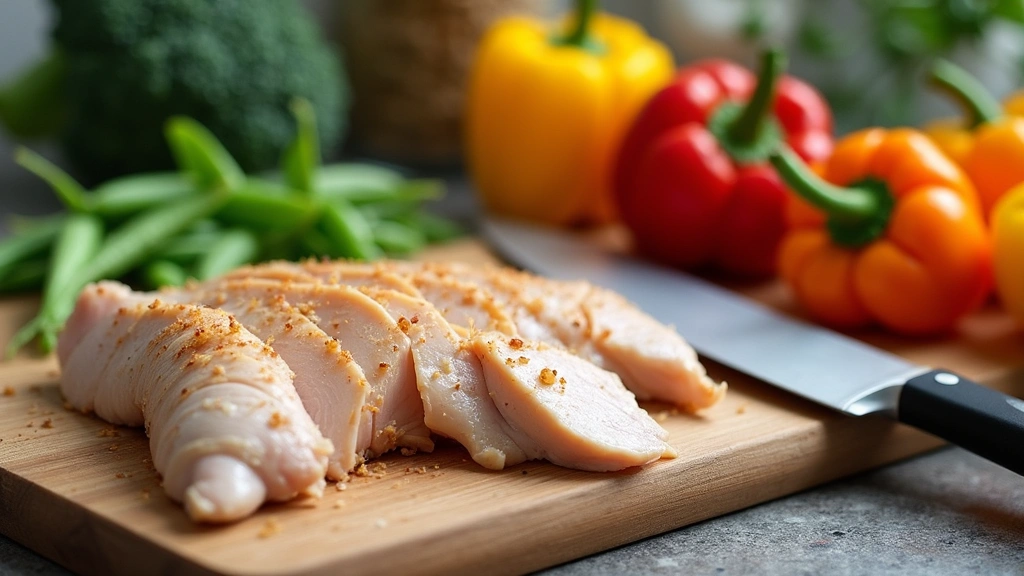
Gather all your ingredients and equipment needed for the recipe.
Slice the chicken breasts thinly and set aside.
Prepare the vegetables by slicing the bell pepper and trimming the snap peas.
Ensure all ingredients are within reach before you start cooking.
Step 2: Marinate Chicken
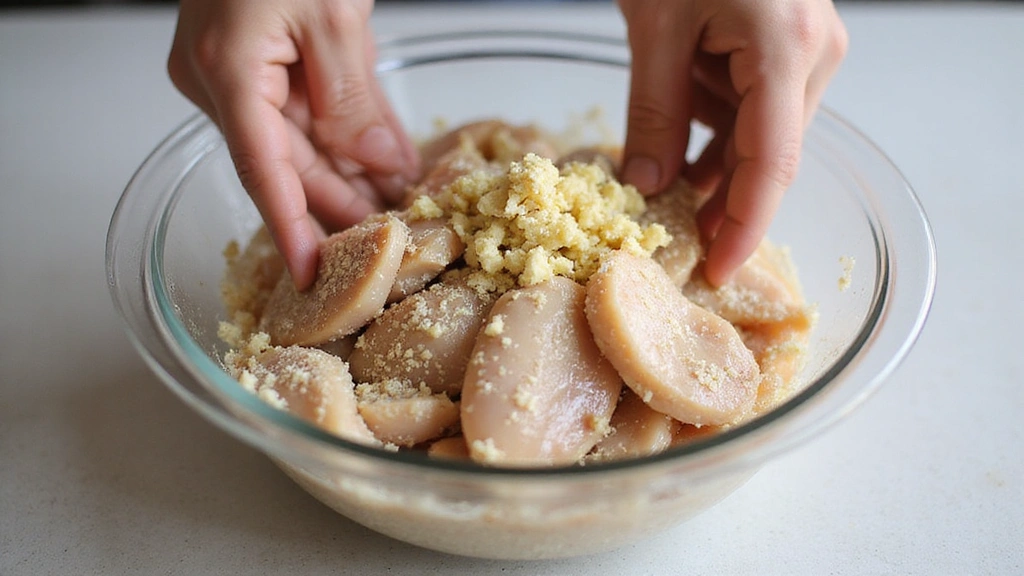
In a mixing bowl, combine sliced chicken with cornstarch and seasonings.
Mix well until chicken is evenly coated.
Let it marinate while you prepare other components.
This step tenderizes the chicken and locks in moisture.
Step 3: Blanch Vegetables

Fill a pot with water and bring it to a boil over high heat.
Add broccoli florets and snap peas to the boiling water.
Blanch for 2 minutes until bright green and slightly tender.
Transfer immediately to a bowl of ice water to stop the cooking process.
Step 4: Prepare the Sauce

In a small bowl, combine soy sauce, oyster sauce, and sesame oil.
Stir well to mix all the ingredients.
Taste and adjust seasoning if necessary.
Set the sauce aside until needed for stir-frying.
Step 5: Heat the Wok
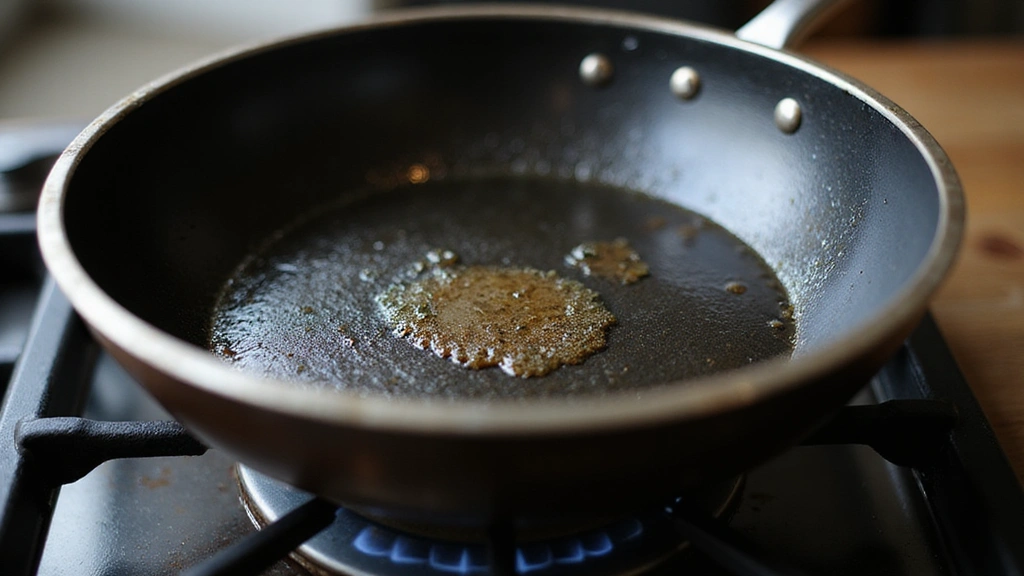
Place the wok on the stovetop and turn the heat to high.
Allow it to heat up for 2-3 minutes until very hot.
Add a tablespoon of cooking oil and swirl to coat the surface.
Ensure the oil is shimmering before adding ingredients.
Step 6: Cook the Chicken
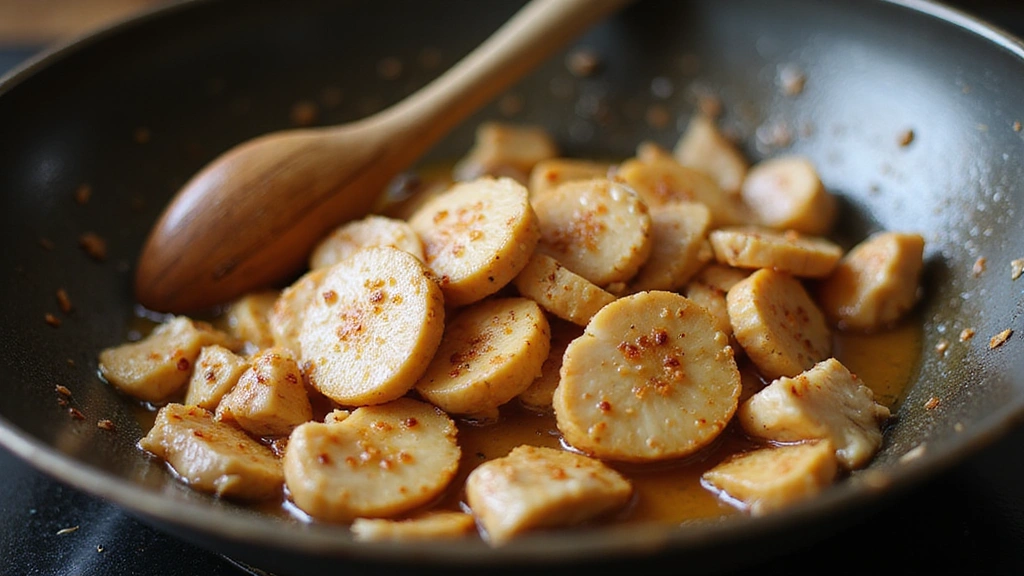
Add marinated chicken to the hot wok in a single layer.
Stir-fry for 3-4 minutes until the chicken is golden brown and cooked through.
Remove the chicken from the wok and set aside.
This prevents the chicken from overcooking while stir-frying vegetables.
Step 7: Stir-Fry Vegetables
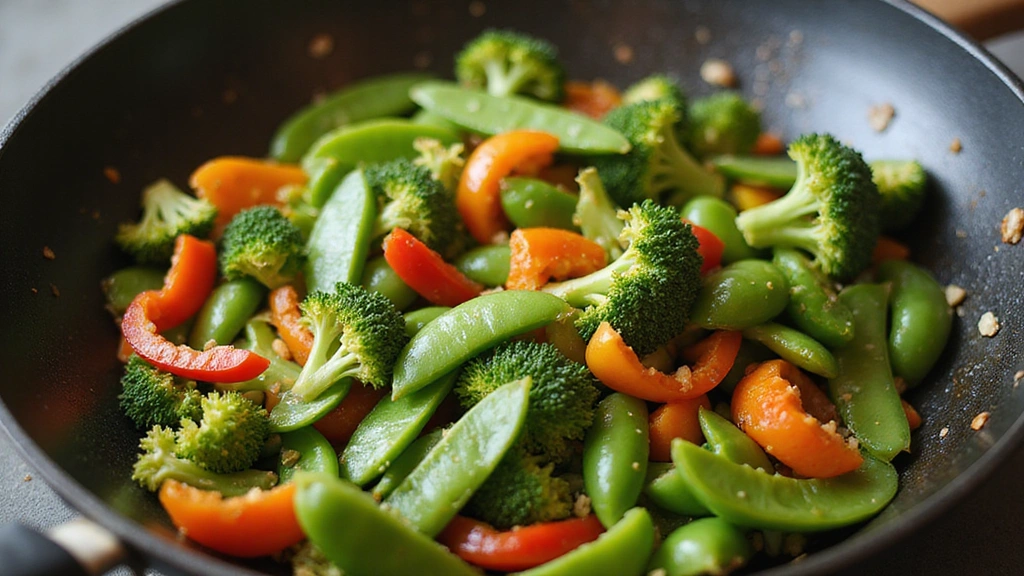
Add sliced bell pepper to the wok and stir-fry for 1-2 minutes.
Add blanched broccoli and snap peas to the wok.
Continue stir-frying for another 2-3 minutes until vegetables are tender-crisp.
Ensure even cooking by constantly tossing the vegetables.
Step 8: Combine Ingredients

Return the cooked chicken to the wok with the vegetables.
Pour the prepared sauce over the chicken and vegetables.
Stir well to coat all ingredients with the sauce.
Cook for another minute to heat everything through and meld flavors.
Critical Timing and Temperature Guide
Chicken Cooking: Ensure chicken is cooked over high heat for 3-4 minutes until golden brown. Avoid crowding the pan to ensure even cooking.
Vegetable Stir-Frying: Vegetables should be stir-fried for 3-5 minutes until tender-crisp. Overcooking leads to soggy vegetables, so watch for bright colors and slight tenderness.
Sauce Integration: Combine sauce with ingredients at the last minute over medium heat to avoid burning. The sauce should slightly thicken and coat ingredients evenly.
Pro Tips for Quick and Easy Dinner
• Ingredient Selection: Choose fresh, vibrant vegetables and high-quality soy sauce for the best results. The freshness of vegetables significantly impacts the dish's final taste and texture.
• Preparation Secret: Marinate the chicken with cornstarch and egg white to keep it tender and moist during cooking.
• Temperature Management: Ensure the wok is very hot before adding ingredients to achieve the ideal stir-fry texture.
• Texture Enhancement: Blanch vegetables before stir-frying to preserve their crunch and vibrant color.
• Flavor Layering: Use fresh ginger and garlic for depth of flavor, and adjust seasoning with chili flakes for heat.
• Make-Ahead Strategies: Pre-slice chicken and vegetables and prepare the sauce in advance. Store them separately in airtight containers for up to 24 hours.
• Restaurant-Quality Finishing Touches: Garnish with toasted sesame seeds and chopped scallions for a professional touch.
• Equipment Optimization: Use a heavy-bottomed wok or skillet for even heat distribution and optimal stir-frying results.
Troubleshooting Common Issues
• Texture Too Dense: This occurs when chicken is overcooked or not thinly sliced. Avoid by ensuring the chicken is sliced evenly and cooked quickly over high heat.
• Flavors Unbalanced: If the dish is too salty, dilute the sauce with a bit of water or add more vegetables. Taste as you go and adjust seasoning gradually.
• Soggy Vegetables: Overcrowding the wok or not pre-blanching vegetables can lead to sogginess. Cook in batches if necessary and blanch vegetables before stir-frying.
• Burnt Sauce: This happens if the heat is too high when adding the sauce. Lower the heat to medium and add the sauce at the last stage of cooking.
• Lack of Flavor Depth: Ensure that ginger and garlic are fresh and properly minced. Insufficient marinating time for the chicken can also result in blandness.
Variations and Regional Differences
• Sichuan Style: This version includes Sichuan peppercorns and dried chili peppers, adding a spicy and numbing effect unique to the Sichuan province.
• Thai Influence: Incorporates Thai basil and fish sauce, offering a fresh and aromatic twist on the traditional recipe.
• Japanese Teriyaki: Uses a teriyaki sauce made from soy sauce, mirin, and sugar, resulting in a sweeter profile.
• Korean Bulgogi Fusion: Combines bulgogi marinade with stir-fried vegetables for a sweet and savory flavor with a hint of smokiness.
Food Science Behind the Recipe
• Maillard Reaction: This chemical reaction between amino acids and reducing sugars gives browned foods their distinctive flavor, crucial for developing the depth in stir-fried chicken.
• Emulsification: Combining oil with soy sauce and oyster sauce creates an emulsion that evenly coats the ingredients, enhancing flavor distribution.
• Thermal Conductivity: The wok's design facilitates quick heat transfer, which is essential for achieving the signature texture of stir-fried dishes.
Frequently Asked Questions
What's the most common mistake people make when preparing stir-fry? Overcrowding the wok, which causes steaming rather than stir-frying, resulting in soggy ingredients.
How can I ensure my vegetables stay crisp? Blanch them briefly and shock in ice water before stir-frying to maintain crispness and color.
Can I use frozen vegetables? While fresh is best, if using frozen, make sure they are fully thawed and drained to prevent excess water in the wok.
What's the best way to slice chicken for stir-fry? Slice against the grain into thin strips to ensure tender bites that cook quickly.
How do I prevent the sauce from burning? Add it at the end of cooking and lower the heat to medium, stirring constantly to avoid sticking.
Is it necessary to use a wok? A wok is ideal for its shape and heat distribution, but a large, heavy skillet can be a good substitute.
Can I make this dish vegetarian? Absolutely, substitute chicken with tofu or a medley of mushrooms for a vegetarian version.
Serving and Presentation Guide
• Traditional Presentation: Serve directly from the wok onto a large platter or individual plates, garnished with sesame seeds and chopped scallions.
• Modern Plating: Use a ring mold to neatly stack rice, topping with the stir-fry for a composed look.
• Family Style: Present the stir-fry in a large serving bowl at the center of the table, allowing everyone to help themselves.
• Casual Setting: Serve in deep bowls for easy handling and to keep the dish warm longer.
Conclusion
This quick and easy Chicken Stir-Fry is a delightful addition to any meal rotation.
With its vibrant flavors and simple preparation, it embodies the essence of Asian cuisine.
Try this recipe today and enjoy a delicious, home-cooked meal that rivals your favorite restaurant.






